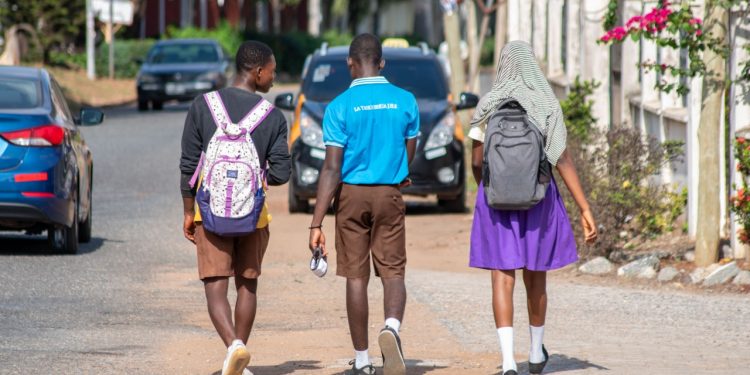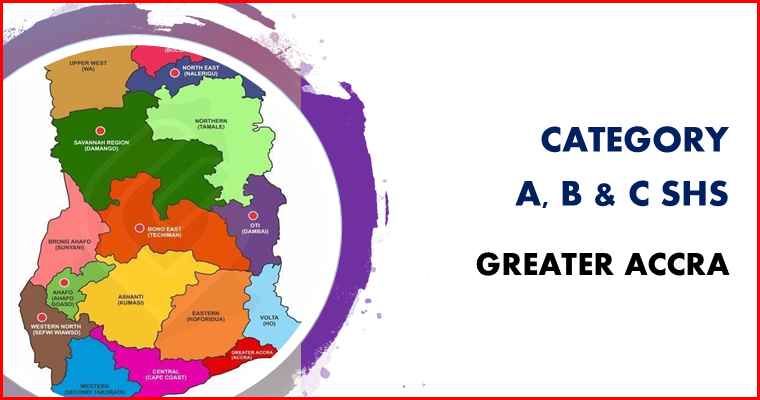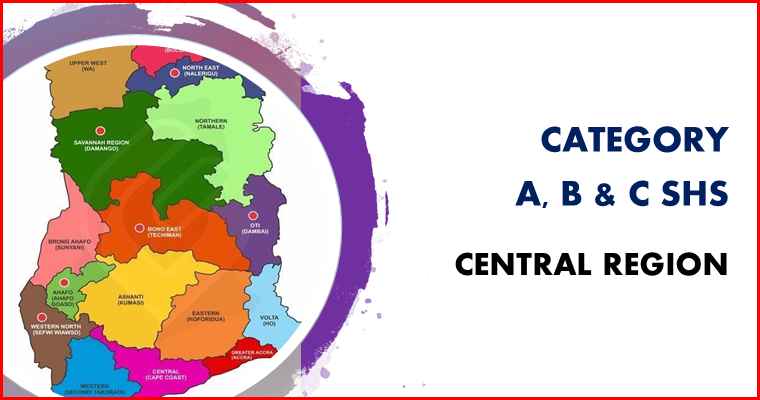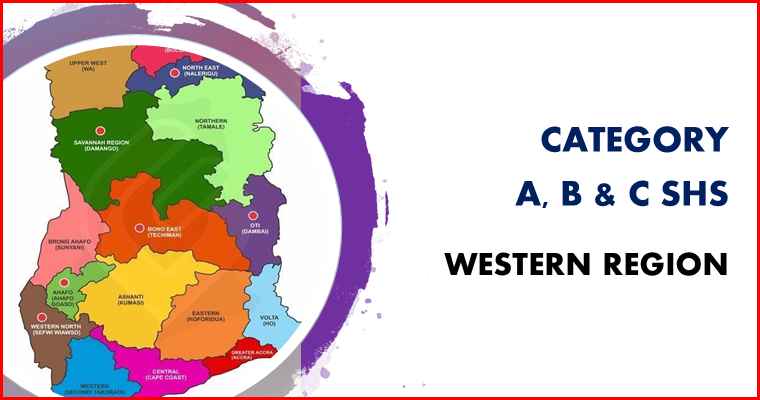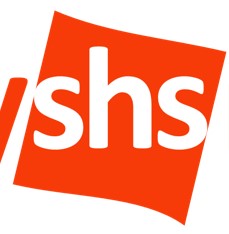A teacher in the Ledzokuku district assumes the role of a guide as we manoeuvre through some back routes in the vicinity of his school. Past a car bodyworks shop, some salons and stores we arrive at a spot behind a carpentry shop that looks abandoned. There is also some reggae music blurting out in the background.
It’s perfect from him though; free from familiar faces and prying eyes whilst seemingly being eavesdrop-proof.
The coronavirus pandemic is fading away from our consciousness but it has caused significant shifts in the structure of education in Ghana; some latent, some overt.
Unsurprisingly, one thing it did not change is the culture of silence in public schools. Teachers are still afraid to speak out, even when it comes to the welfare of students they have grown to care about.
This mild-mannered teacher, Teacher Joe (we can call him), is wary of a directive to teachers to keep their mouths shut, especially to journalists. But he is among teachers in public schools very worried that some of their students are being pushed up a river in a canoe riddled with holes.
They know their students will be fighting to keep their heads above water some ways down the line but they cannot do much about it. Some may argue this has always been the case. It is just that the pandemic has heightened the strain on the average public-school students.
But Teacher Joe, an Information and Communications Technology (ICT) tutor, has taken the further step of voicing his concerns about the quality of education his students got after they resumed school from the coronavirus layoff that saw Ghanaians school kids being among the 1.2 billion worldwide physically out of school.

We meet a day after students he has taught for almost three years have sat for their Basic Education Certificate Examination (BECE) ICT paper.
He didn’t have high hopes. Four months at home left students blunt and rusty. They weren’t the sharpest tools in the box, to begin with, Teacher Joe intimated as he fidgeted with his phone.
Most of the students engaged in no academic work during the layoff. “They had gone down,” he says. “I think they went to relax and we had to start everything from scratch.”
It didn’t help that as part of the protocols for the resumption of schools, contact hours had been halved to a mere four hours as students prepared for the BECE; 9 am to 1 pm on weekdays to cover nine subjects.
A digital headache
The state envisioned some of the challenges with rust and contact hours. Ghana was among the 65 percent of lower-middle-income countries that saw the setting up of remote learning platforms.
These interventions were seen being used effectively in the upper tiers of the private sector but offered minimal success in schools like Teacher Joe’s; which’s classes were filled with kids coming from homes firmly below lower-middle-income status.
This is simply because they do not have access to personal computers, smart devices and even affordable internet.
“Some of the parents don’t even have smartphones let alone the students so it was difficult for us to handle them online. We couldn’t do that,” says Teacher Joe.
A household survey on ICT by the Ghana Statistical Survey would seem to back this.
For as much as we tout the improved mobile penetration in Ghana, there are still 46.8 percent of persons without mobile phones in urban areas. And nationally, 46.1 percent of persons who use mobile phones are using smartphones.
The survey further revealed that only 7.9 percent of Ghanaians owned functional computers; laptop computers, desktop computers or tablets. This figure rises to 12.9 percent in urban areas.
One would hope this next detail is not representative of school kids in urban areas, but 50.5 percent of urban residents had no knowledge of the internet.
The numbers aside, the reality for Teacher Joe is he had zero interaction with his students during the layoff and the same applied to other teachers in and around his school because “there was no provision for us to handle them online.”
The channel set up by the state which aired class lessons received some acknowledgement from Teacher Joe. He even noted the industry of a few students who he learned were sharing lesson notes and the like via online messenger services like Telegram. But it wasn’t enough.
The geographical divide
The concerns with inequality take another turn when we step away from the public-private divide. Consider the role geography plays in the quality of education students may have.
The learning gap between schools in rural and urban areas has been a source of concern for the policy research and advocacy NGO, Africa Education Watch.
Its director, Kofi Asare, is also worried that our education system’s reaction to the pandemic “actually deepened that [inequality] divide.”
“Six to eight months of school closures virtually meant that only learners living in areas were there was technology and the internet had access to learning content that was developed by the government.”
Even before the pandemic, Ghana, and other parts of the developing world, was already in the middle of a learning crisis. For example, 53 percent of children in low and middle-income countries cannot read and understand a basic text at age 10.
The Ministry of Education in a 2018 report acknowledges that urban-rural differences are prevalent, with schools in urban areas significantly outperforming schools in rural areas just as and private schools significantly outperform public schools.
The performance of pupils residing in the formerly-three regions of northern Ghana, where the majority of pupils sampled were residing in deprived districts, was the poorest.
In the report, the Ministry of Education cites the Statistical Service’s 2015 Ghana Poverty Mapping Report which shows stark differences in poverty across Ghana, with a high incidence of poverty observed in the northwest of Ghana and much lower incidence in the southwest.
Similar trends are noted when it comes to the number of poor people and the depth of poverty. There is a “strong correlation of regional patterns of poverty, the proportion of the population living in urban areas, and the proportion of educationally deprived districts,” the report said.
Unsurprisingly, the Statistical Service’s ICT survey results in rural areas did not make for easy reading either. For mobile phone ownership, 44.8 percent tick the right box, only 2.9 percent of individuals in rural areas owned computers and 22.6 percent had no awareness of the internet.
But forget computers and internet access. About 18.6 percent of Ghanaians do not have access to power. This almost tallies with the Ministry of Education’s estimate that students from the poorest 20 percent of households, the most deprived districts or from rural areas are about five to six times less likely to access secondary education.
The lack of access to electricity rises to 33 percent when considering just rural areas as opposed to 6 percent in urban areas.
It is for reasons like this that Ghana’s commitment to providing universal access to electricity by the year 2020 via the National Electrification Scheme is critical for observers looking for more parity in education.
Ghana committed to universal access to electricity as far back as 1989 when only 15 to 20 percent of the population had access to electricity. We have most likely missed the goal to reach full coverage in 2020.
The question of electrification is but one of the notches in the inequality belt Mr. Asare is looking to loosen. This point sticks out to him because of how the interventions put in place when schools closed actually ignored students in communities without power, let alone computers, televisions and the internet.
In simple terms for him, the state was “punishing those in rural areas.”
“So the interventions by the state and other stakeholders to bridge the learning gap created as a result of COVID actually went further to deepen the existing quality divide between rural and urban schools.”
To close the gap in the short term, teachers would need to deploy more innovation in teaching.
But as at the time we spoke, Teacher Joe was unaware of any special plans for efficient teaching and learning in his district.

He looks forlorn as he creates the impression that public school teachers in his position were left with nothing but gallons of spilt milk following the return of final year’s.
There is no use crying over it though. It would do more good to focus on learning from the challenges his final year’s faced to better handle the second years who returned to school on October 5.
Teacher Joe gets a little feisty when the issue of contact hours come up. He also doesn’t like the fact that authorities are unwilling to be flexible with time.
Private schools have extended closing hours in a bid to help students catch up, he retorts as if making a case to the Director-General of the Education Service. This is the argument he would have wished his headteacher was making for students.
“Some of the heads are just like robots. As a headteacher, you can be innovative and do something that will help the children. I don’t think any authority will complain about us helping the children beyond 1 pm.”
Eyebrows have to be raised about how the state catered for the most vulnerable in our society during the pandemic. In some people’s books, the Akufo-Addo administration failed. The debacle with the kayayei tossed between regions was a notable example of this.
Some of the most vulnerable persons within the educational space were in rural areas. It doesn’t look like much attention was paid to them.
“For the BECE, less than 30 percent of those who write the BECE in the rural areas get to the senior high school level,” Mr. Asare notes as an example.
Although an overly simplistic link, it is hard not to think of the 33 percent of rural Ghana without electricity when reflecting on this figure.
And after a year that demonstrated the potential for ICT and online learning globally, school children in rural and deprived communities are in danger of being left out of what Mr. Asare called a technology “revolution.”
“Education cannot happen if electricity supply is only available to those in the urban areas because the world is now moving to an education system that is technologically driven.”
In this light, power and internet access to rural areas must become paramount, he argues. “We shouldn’t see the internet as an economic resource alone.”
“There is the need for the state intervention to leverage the social need for internet with the economic sense in transmitting internet to rural areas.”
This would mean telcos should be given incentives to expand the internet nationwide, especially to the most vulnerable so “we don’t leave rural children out of this revolution.”
Consideration for teachers
With the focus on the students, there is the temptation to forget how vital the welfare of teachers also is to the learning process.
Observers like Grant Bulmuo, the head consultant at Neogenics Education Group, have raised concerns over the wellbeing of teachers in the private sector during the long layoff and have even petitioned the President on this.
He feels at critical times during the pandemic, teachers should have also been centred, not necessarily with financial backing but general moral support.
This was then to translate into academic gains for students who were put in a fragile position. But this is an opportunity the state most likely missed, Mr. Bulmuo says.
“There wasn’t a conscious or intentional national effort to really bring teachers together to see the need to sacrifice.”
“Schools were left on their own. School proprietors were taken by surprise when the government had to announce the school closures and nothing followed,” the consultant recalls.
The lack of synergy manifested in a fragmented approach to dealing with the pandemic which was undoubtedly a marker of the inequalities in the space.
Students like Teacher Joe’s or students in rural areas were heavier underdogs to succeed academically even under non-pandemic conditions.
One does not need to look further than the conditions Teacher Joe has worked with over the years.
His subject is critical given the digital ladders Ghana hopes to climb with some consistency. But indications are that his students will remain at the foot of the ladder for the foreseeable future.
Like has been seen in many deprived schools across Ghana, Teacher Joe teaches ICT without computers. There is no computer lab in his Ledzokuku school and the last time he had computers available, they were branded RLG and John Mahama was president of Ghana.
All those computers have since broken down and he has just one computer provided by the education service.
“We cannot be learning ICT on the marker board. Some of the things are very simple but the children find it very difficult to understand,” he complains.
He also only meets them thrice a week “which is not enough for the practical work.”
“People say they don’t perform in ICT but I don’t blame the students. We [teachers] don’t do enough,” Teacher Joe admits.
The unheard tiers in the private space
One’s head starts to ache when trying to comprehend just how damaging the coronavirus will be to a country that was making only marginal gains.
Seemingly caught in no man’s land are the class of Low-Fee Private schools that are in as bad a shape as some of the most deprived public schools across rural and urban areas.
Some of these Low-Fee Private schools are not on the radar of the education service, Mr. Bulmuo notes. Data on them has been difficult to come by.
The lowest rungs of private schools are marked by their subsistence. Students are known to pay fees daily or weekly because their parents or guardians cannot afford bulk fees.
Think tank IMANI Africa noted that Low-Fee Private schools cater to those living on less than $2 a day.
In a 2017 paper, IMANI indicated that it costs $1 per week to educate a child in a low-fee private school while it costs nearly $4 in public schools with different quality outcomes.
Sometimes parents opt for private schools, regardless of the quality, because of a lack of access to public schools. On other occasions, it is a manifestation of a lack of trust in the public sector.
“We have this traditional belief that a private education no matter what level it is, is of higher quality than the public,” Mr. Bulmuo observes.
There is some truth in this perception. Studies by educational entrepreneurship professor James Tooley in 2007 and 2009 found that students enrolled in low-fee private schools in India, Nigeria, and Ghana generally score higher on standardised tests in key curriculum subjects than students in public institutions.
Classes in Low-Fee Private schools also have smaller class sizes than public schools, more teacher to pupil contact, and less teacher absenteeism as compared to public schools.

A Results for Development Institute study noted that poor infrastructure emerged consistently as the greatest challenge faced by low-fee private schools.
“Infrastructure is weakest in schools that are rural, unregistered, or located in the Upper East Region,” the study noted.
Children in low-fee private schools may not be worse off academically but the bar is so low it becomes a contest for the tallest dwarf in the village.
At the basic level, students in low-fee private schools “will probably attend six years of primary education but in actual fact, the net learning that took place in their education life in that school will be three years,” Mr. Bulmuo intimates.
His affinity for the importance of teachers in the education process remains clear and believes the government must intervene in the worst-off private schools.
“The government should begin to take responsibility for some of these schools if they don’t meet a certain threshold or a certain standard,” he says. “The government should take over and send qualified personnel to run those schools.”
The consequences of the coronavirus pandemic will continue to unfold years down the line. On the evidence of 2020, this pandemic is set to continue perpetuating intergenerational cycles of educational inequality and ultimately feed into income inequality if nothing is done by the state.
There are layers and overlaps that ought to be considered in attempts to restructure education and development as evidenced by the Sustainable Development Goals on education which aim to “ensure inclusive and equitable quality education and promote lifelong learning opportunities for all.”
“Education doesn’t happen in a vacuum,” Mr. Asare stresses. “[But] when Think tanks Like Africa Education Watch make statements on other issues of national importance, people with constricted views don’t see the value.”
Source: Citi News
